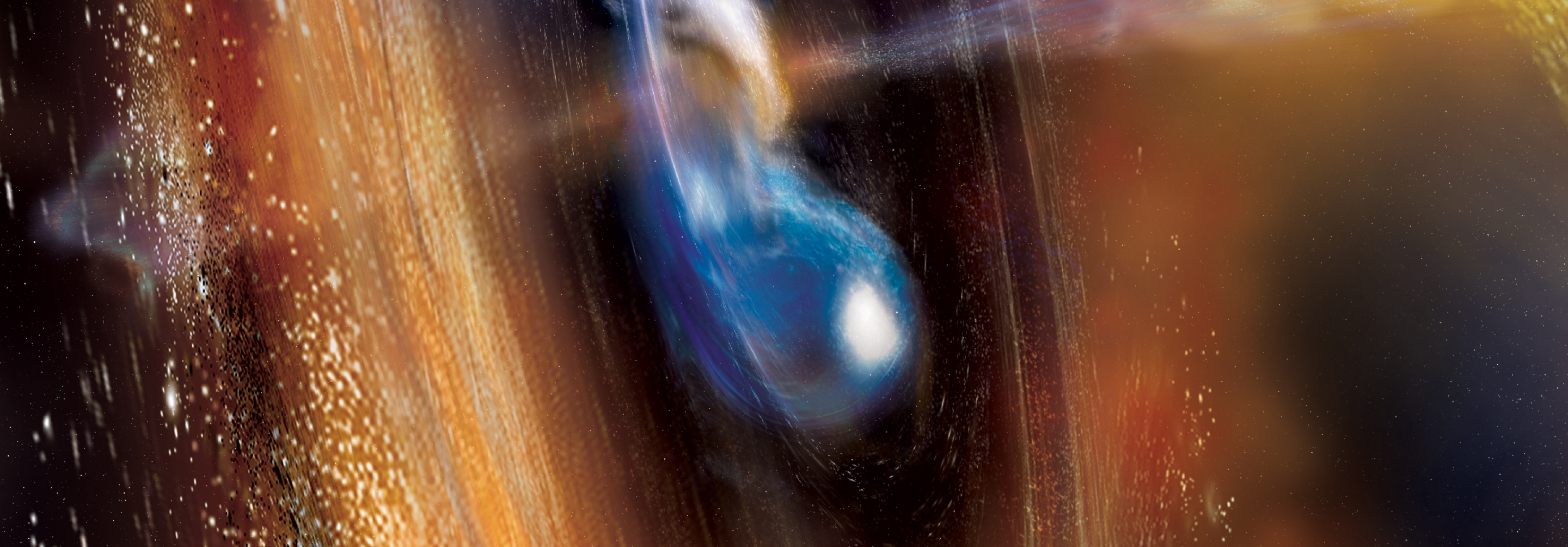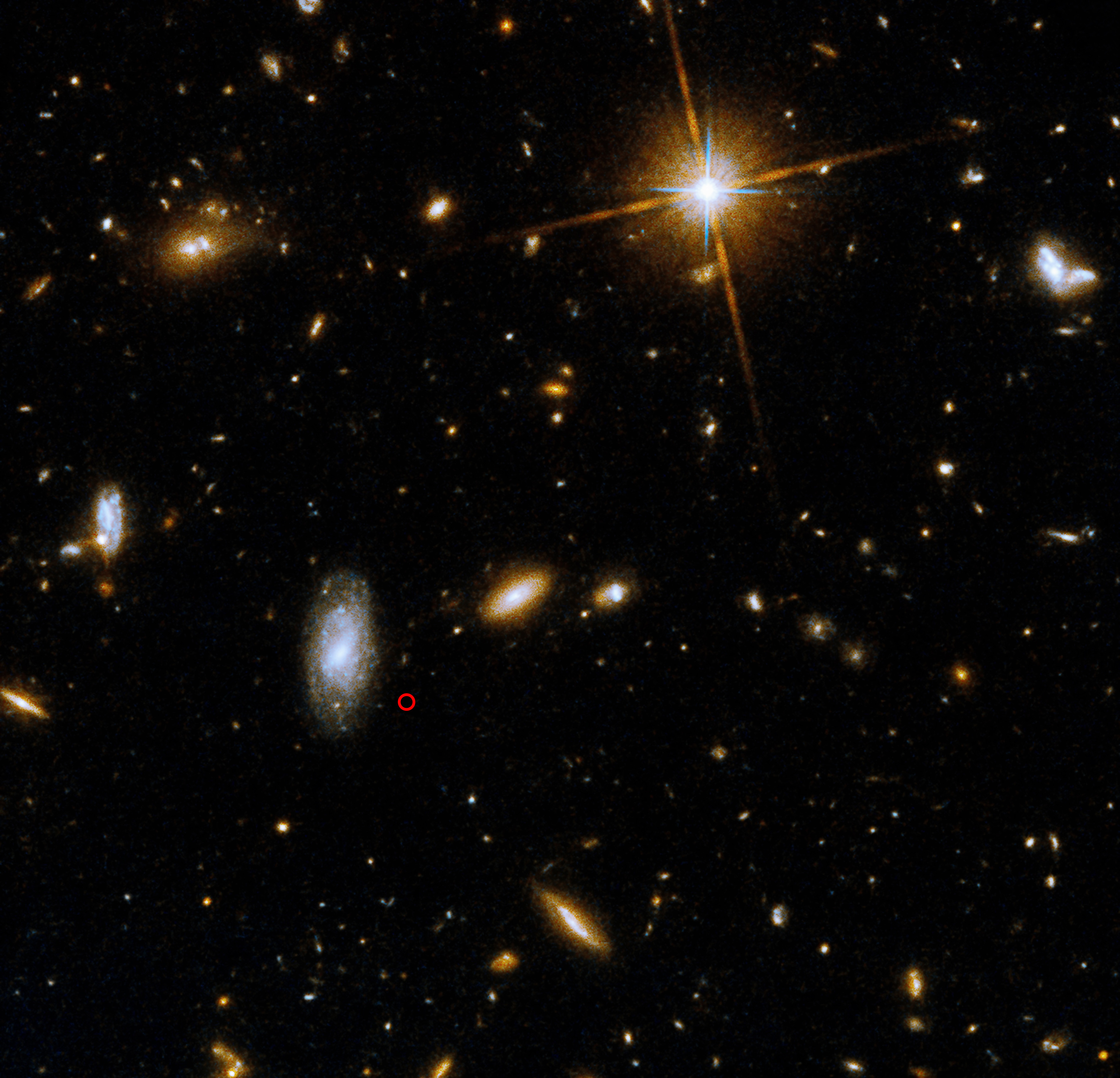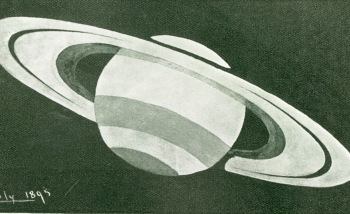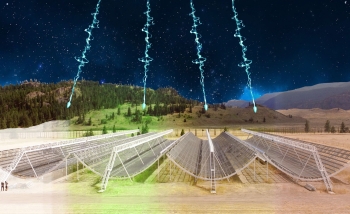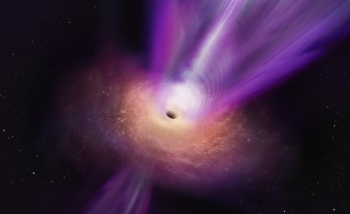Cosmic explosion leads to first-of-its-kind gamma-ray burst detection
On December 11, 2021, NASA's Neil Gehrels Swift Observatory and Fermi Gamma-ray Space Telescope detected a blast of high-energy light from the outskirts of a galaxy around 1 billion light-years away. The event has rattled scientists' understanding of gamma-ray bursts (GRBs), the most powerful events in the universe.
For the last few decades, astronomers have generally divided GRBs into two categories. Long bursts emit gamma rays for two seconds or more and originate from the formation of dense objects like black holes in the centres of very massive collapsing stars. Short bursts emit gamma rays for less than two seconds and are caused by mergers of dense objects like neutron stars. Scientists sometimes observe short bursts with a following flare of visible and infrared light called a kilonova.
"This burst, named GRB 211211A, was paradigm-shifting as it is the first long-duration gamma-ray burst traced to a neutron star merger origin," said Jillian Rastinejad, a graduate student at Northwestern University in Evanston, Illinois, who led one team that studied the burst. "The high-energy burst lasted about a minute, and our follow-up observations led to the identification of a kilonova. This discovery has deep implications for how the universe's heavy elements came to be."
A classic short gamma-ray burst begins with two orbiting neutron stars, the crushed remnants of massive stars that exploded as supernovae. As the stars circle ever close, they strip neutron-rich material from each other. They also generate gravitational waves, or ripples in spacetime – although none were detected from this event.
Eventually, the neutron stars collide and merge, creating a cloud of hot debris emitting light across multiple wavelengths. Scientists hypothesize that jets of high-speed particles, launched by the merger, produce the initial gamma-ray flare before they collide with the wreckage. Heat generated by the radioactive decay of elements in the neutron-rich debris likely creates the kilonova's visible and infrared light. This decay results in the production of heavy elements like gold and platinum.
"Many years ago, Neil Gehrels, an astrophysicist and Swift's namesake, suggested that neutron star mergers could produce some long bursts," said Eleonora Troja, an astrophysicist at the University of Rome who led another team that studied the burst. "The kilonova we observed is the proof that connects mergers to these long-duration events, forcing us to rethink how black holes are formed."
Fermi and Swift detected the burst simultaneously, and Swift was able to rapidly identify its location, in the constellation Boötes, enabling other facilities to quickly respond with follow-up observations. Their observations have provided the earliest look yet at the first stages of a kilonova.
Many research groups have delved into the observations collected by Swift, Fermi, the Hubble Space Telescope, and others. Some have suggested the burst’s oddities could be explained by the merger of a neutron star with another massive object, like a black hole. The event was also relatively nearby, by gamma-ray burst standards, which may have allowed telescopes to catch the kilonova’s fainter light. Perhaps some distant long bursts could also produce kilonovae, but we haven’t been able to see them.
The light following the burst, called the afterglow emission, also exhibited unusual features. Fermi detected high-energy gamma rays starting 1.5 hours post-burst and lasting more than 2 hours. These gamma rays reached energies of up to 1 billion electron volts. (Visible light’s energy measures between about 2 and 3 electron volts, for comparison.)
The afterglow emission typically fades on timescales of days or weeks, though they can sometimes be seen for a year or more, according to Geoffrey Ryan, a postdoctoral researcher at Perimeter Institute who was part of Troja's group.
"The afterglow of this GRB is a puzzle," said Ryan. "It was substantially fainter than expected from a GRB so bright, and it decayed quite rapidly. The Fermi telescope also detected high-energy afterglow gamma rays at higher-than-expected levels. This could be a rare type of "naked" afterglow, or perhaps just a very peculiar relativistic jet. When LIGO turns back on next year, we're hopeful it'll detect several binary neutron star mergers that will yield further clues to this cosmic mystery."
Scientists think neutron star mergers are a major source of the universe’s heavy elements. They based their estimates on the rate of short bursts thought to occur across the cosmos. Now, they’ll need to factor long bursts into their calculations as well.
About PI
Perimeter Institute is the world’s largest research hub devoted to theoretical physics. The independent Institute was founded in 1999 to foster breakthroughs in the fundamental understanding of our universe, from the smallest particles to the entire cosmos. Research at Perimeter is motivated by the understanding that fundamental science advances human knowledge and catalyzes innovation, and that today’s theoretical physics is tomorrow’s technology. Located in the Region of Waterloo, the not-for-profit Institute is a unique public-private endeavour, including the Governments of Ontario and Canada, that enables cutting-edge research, trains the next generation of scientific pioneers, and shares the power of physics through award-winning educational outreach and public engagement.
